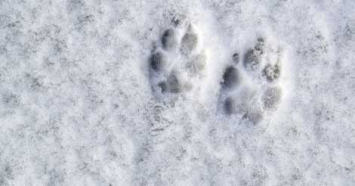
Winter is a wonderland for romping pups, but it also hides dangers for their precious paws. Freezing temperatures, ice, salt, chemicals and damp snow take a major toll. By following these tips to care for dog paws in snow, you can help keep your pup comfortable and safe all season long.
1. Limit Dog Outdoor Time in Cold Weather
Despite the fact that many dogs enjoy frolicking in the snow and playing in the cold weather, there is a limit of how cold is too cold that can be dangerous, or even deadly. Many people assume a dog's fur will naturally keep them warm during the winter, but dogs’ paws can get frostbite and they’re also susceptible to hyperthermia because of exposed skin. A good rule of thumb is that as long as your dog is running and playing in the snow, it is fine to remain outdoors, but as soon as they stop, you should think about heading inside. If your dog must be outside for longer than what is usual, consider a coat or jacket and boots.
2. Maintain a Dog-friendly Winter Yard.
There are a lot of things you can do to help your dog have a better winter. Pet owners who allow their dogs to go outside to do their business should make the area as safe as possible. Keep the fenced-in areas free from snow and ice. Avoid using toxic deicers on your property, or a large amount of rock salt in places where your dog may go. If you must use deicers, look for the type that is safe to use around animals. If you notice your car leaking antifreeze, clean it up immediately. Although antifreeze is a deadly poison, it has a sweet taste that can attract dogs, other animals, and even young children.
And when they come inside, place rubber mats or carpets on slippery surfaces like wood or tile floors. This provides secure footing indoors after outdoor play sessions.
3. Prepare Your Dog's Paws Before Heading Outside.
While it is a good idea to maintain your dog's paws throughout the year, it is essential throughout the winter months. Before going for an extended outdoor walk, use an electric clipper to trim excess hair between pads on your dog's paw. Too much extra hair can retain moisture and lead to freezing which increases the chance of frostbite. Also try to keep your dog's nails trimmed since unkempt nails make it more difficult for your pet to walk and increases their chance of getting hurt by slipping on ice.
You may also want to use a specially formulated paw wax to add another layer of protection from the weather. Paw wax creates a barrier against salt and chemicals. Alternatively, cover paws with a thin layer of petroleum jelly for budget-friendly protection. Just be careful because it’s a petroleum-based product and if they ingest too much, it can lead to some stomach issues. Paw wax is the safer option.
4. Consider Using Dog Booties or Paw Covers.
Doggy snow boots can protect your dog's paws against frostbite, drying out, and coming in contact with chemicals. Dog boots also provide your pet with better traction in slippery conditions. When choosing your dog's snow boots, make sure that they are secure enough to stay on, but are loose enough not to constrict blood flow to extremities. If it is possible, before purchasing anything, have your dog try on several different brands of dog boots to see which ones are the best fit and make sure to take the time to train your dog to wear boots properly. Check the tightness of booties periodically during winter walks. As activity increases blood flow, paws may expand slightly. Loosening straps prevents discomfort or loss of protective footwear.
5. Give Your Pooch’s Paws a Little Post-Walk Pampering.
After returning from a winter walk, spend a few minutes caring for your dog's paws. Inspect each paw and look for and remove debris embedded in the pads or between them. Use a clean towel with warm water to wipe down each of your pet's feet; this helps melt ice and washes off as much salt and deicer as possible.
Finally, apply a pet-friendly moisturizer to your dog's paws to prevent cracking. Make sure to wipe off excess to keep your dog from tracking it around your home. For best results, use moisturizers containing beeswax, vitamin E or shea butter. These ingredients sink in deeply to nourish dry, cracked skin.
While winter can be more dangerous for your dog than other times of the year, there is no reason why you can’t let your dog enjoy a winter wonderland when taking the proper precautions.
Watch for Signs of Cold Distress in your Pup
Pay close attention to your dog when out in the winter elements. Listlessness, curling up, reluctance to move, and shivering can indicate cold distress. Immediately head indoors to return to warmth. For small dogs, carry them back inside if needed. Signs of paw discomfort like repeated paw licking/chewing or favoring a certain paw may indicate irritation, injury or freezing. Report concerns to your veterinarian, but keeping an eye out for signs of discomfort will usually result in a safe winter outing for you and your dog.
Safeguard Your Pup All Winter with Pet Insurance
Even with proper at-home paw care, medical issues can still arise for dogs during cold weather months. Pet insurance provides an essential safety net, helping dog parents access top-quality veterinary care without financial stress. Comprehensive Embrace Pet Insurance plans cover conditions related to winter paw injuries, allergies, arthritis pain and more. This winter season, give your pup the ultimate care, both at home and through a tailored insurance policy designed just for their unique needs. Protect those precious paws inside and out!